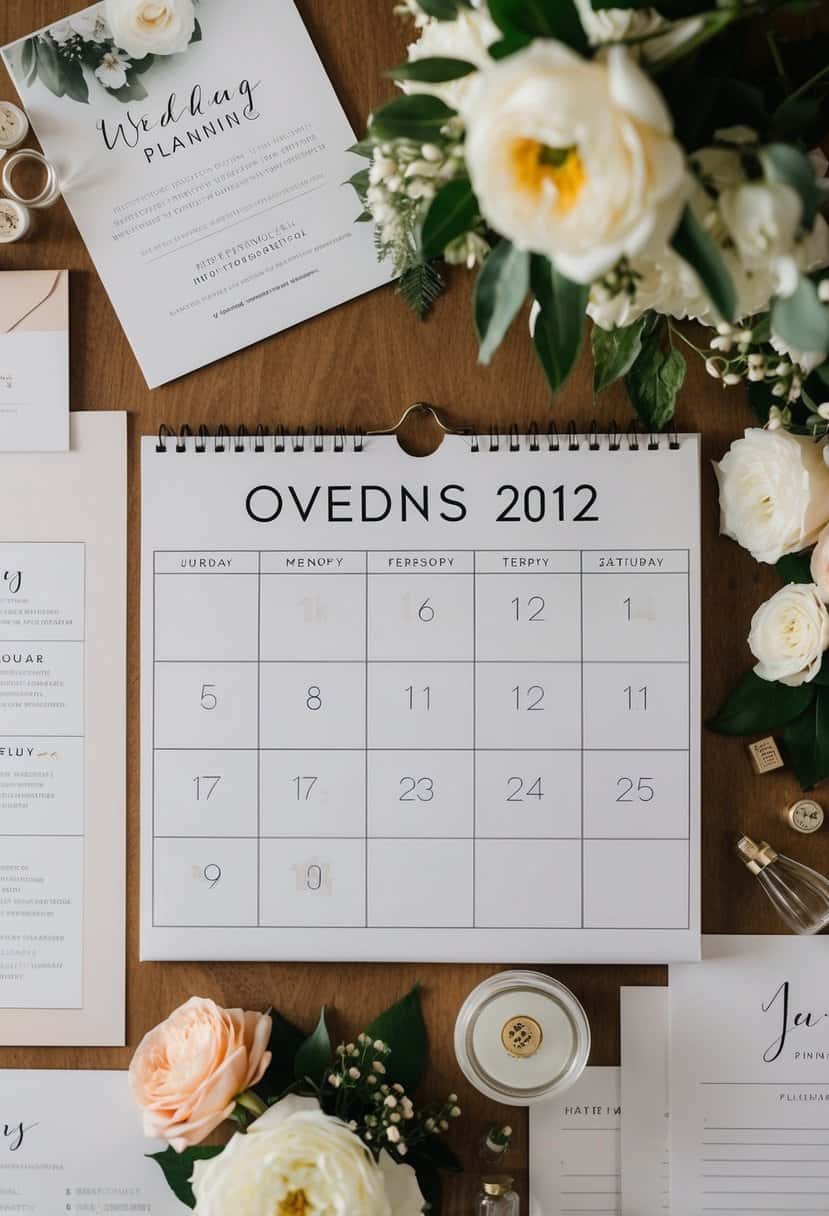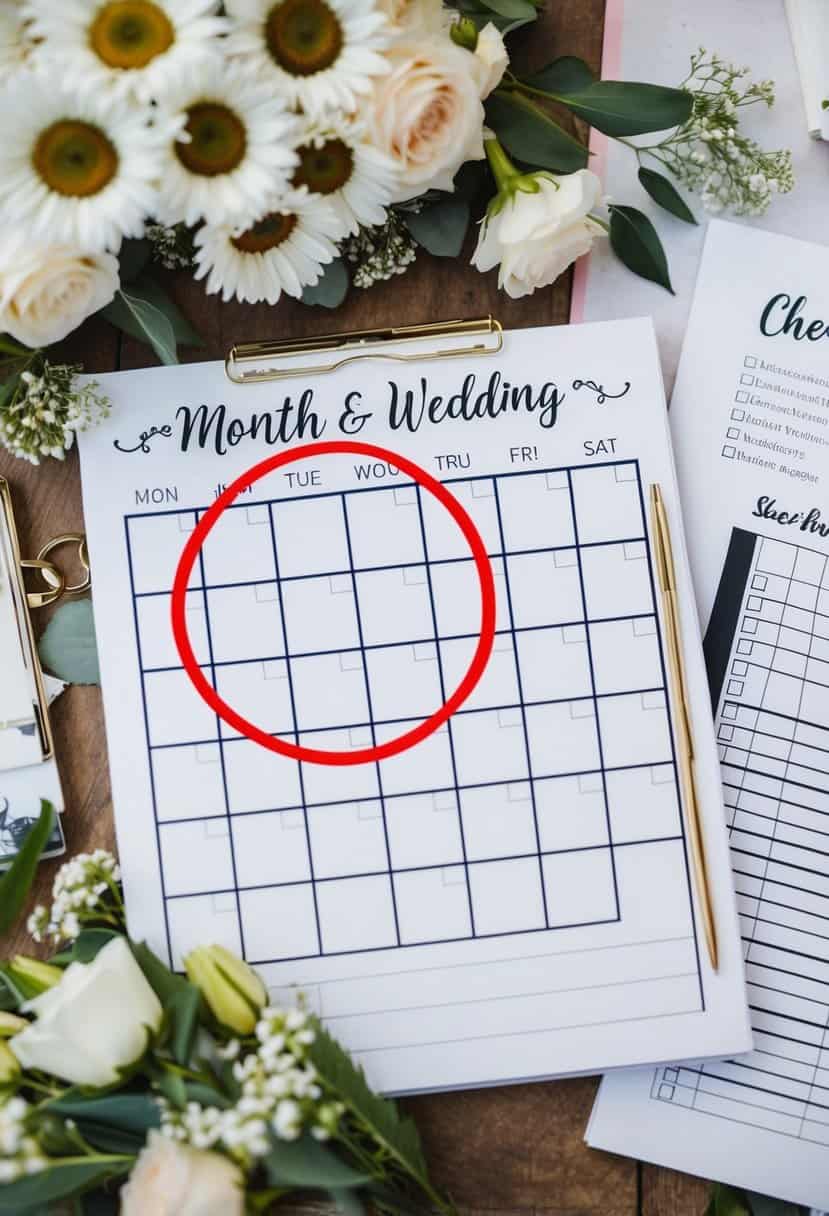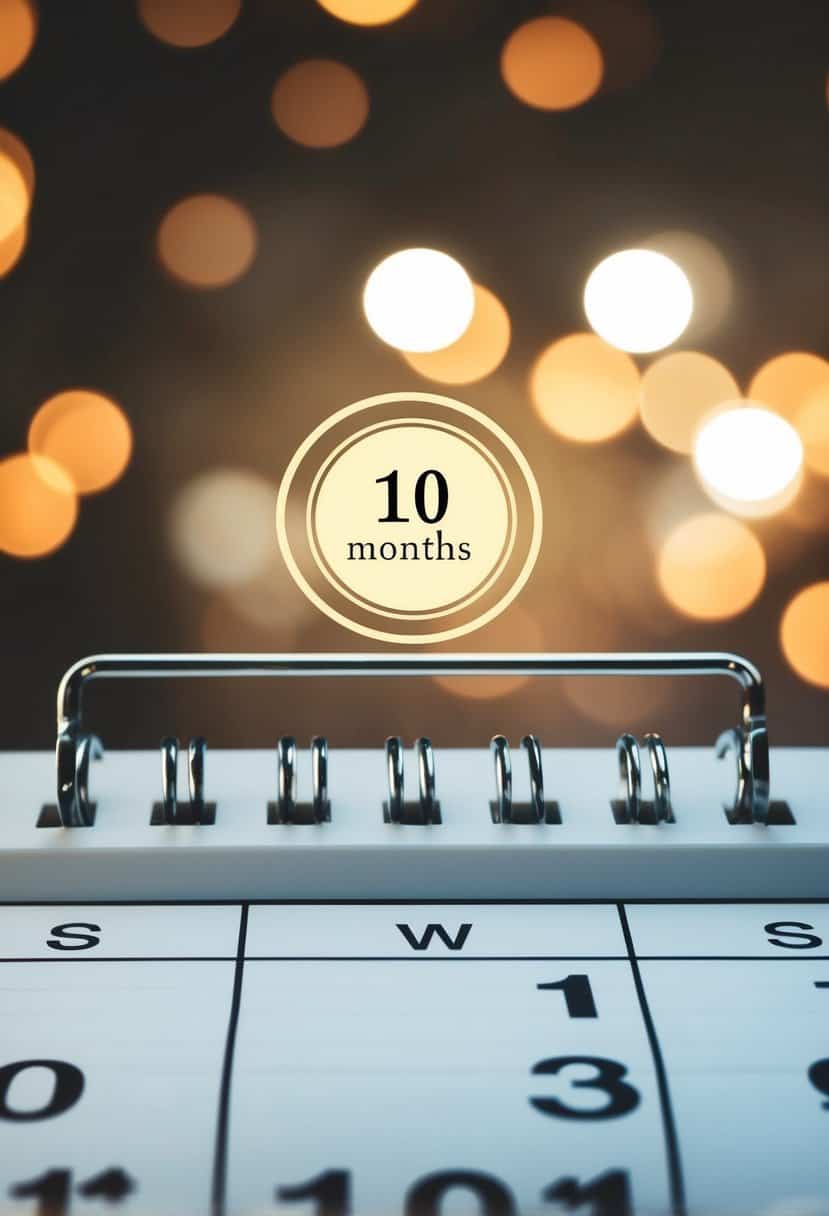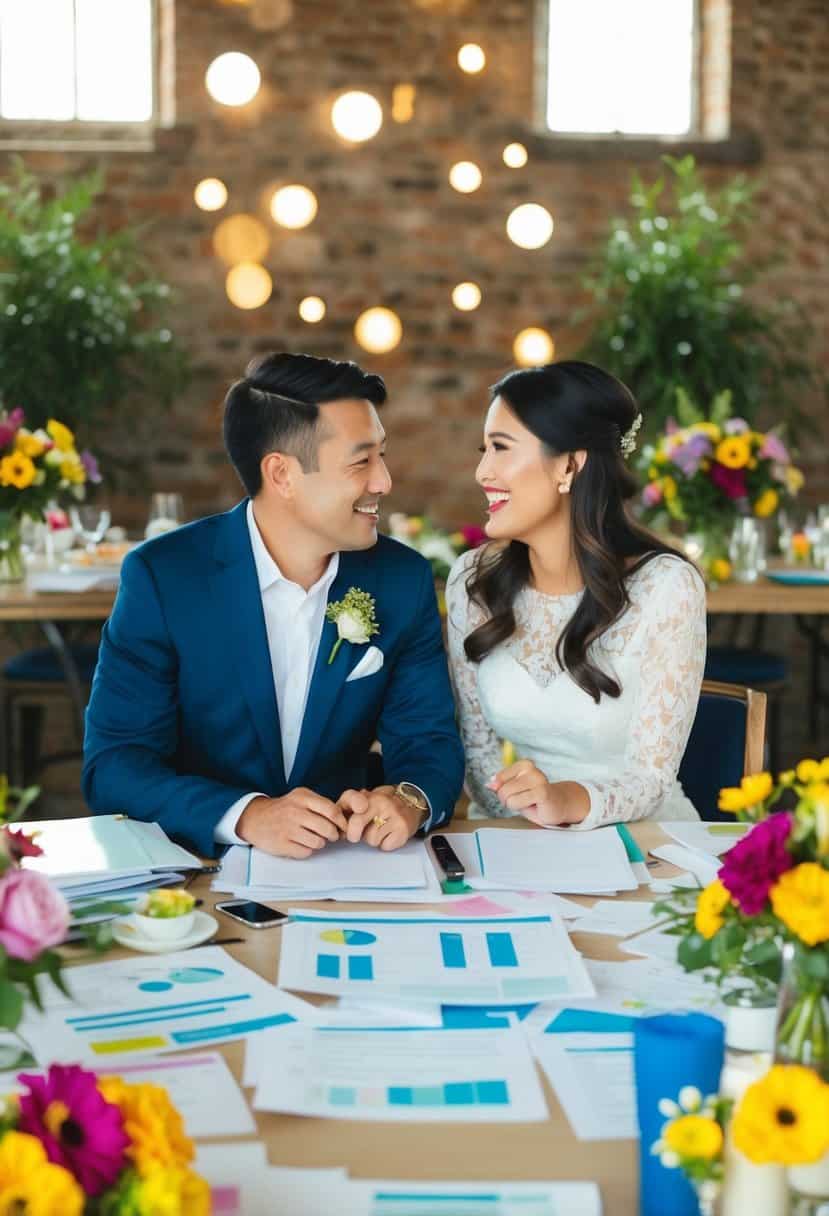Is 10 Months Too Soon to Plan a Wedding? Tips for a Smooth Journey
Planning a wedding is an exciting journey. You’re probably wondering if starting with a 10-month timeline is reasonable. While the average time to plan a wedding is about 15 months, 10 months can definitely work. Many couples have created beautiful weddings within this time frame.

You’re in good company if you’re planning a wedding in less than a year. With the right planning timeline and focus, you can absolutely pull it off. This period gives you ample time to make key decisions, book venues, and sort out details. The process might seem fast-paced, but it can be an exciting challenge.
Your planning timeline will guide you through each step efficiently. Remember, shorter timelines can be advantageous. They spark creativity and avoid overthinking decisions. Dive into your wedding planning with enthusiasm and enjoy the journey toward your special day!
Understanding the Wedding Planning Timeline

Planning a wedding in ten months is achievable with the right approach. Breaking down tasks into manageable parts helps in staying organized and stress-free.
Setting a Realistic Timeline
It’s important to map out your wedding planning journey early. Begin by choosing your preferred wedding date. After that, focus on the major elements, such as booking the venue, hiring a caterer, and selecting your bridal party. Aim to have these done within the first few months.
To stay organized, create a wedding checklist. This should include tasks like choosing your wedding dress, sending save-the-dates, and scheduling tastings with potential caterers. You can find inspiration from timelines such as the one on Junebug Weddings. Consistently update your checklist to track progress and adjust for any unexpected changes.
Key Milestones in Wedding Preparation
Identify key milestones to mark progress. About nine months before the wedding, you should finalize your guest list and start sending out invitations. Booking important vendors, such as photographers and musicians, is crucial at this stage.
A few months before the wedding, arrange a meeting or final call with your wedding planner or coordinator to discuss any last-minute details. Prepare payments, tips, and any ceremony and reception items in advance. Ensure you have a day-of emergency kit ready.
Assembling Your Dream Team

Putting together a great team for your wedding is key to making your big day perfect. You’ll want professionals who understand your vision and can deliver exceptional service.
Selecting the Right Wedding Planner
A wedding planner plays a crucial role in ensuring everything runs smoothly. When choosing one, look for someone with a large portfolio and good reviews. Ask friends or family for recommendations if they’ve had successful weddings.
An experienced planner can help you manage your budget and schedule, making appointments with vendors like the florist and caterer. They’ll also provide advice on current wedding trends and themes. Trust and communication are important, so make sure you feel comfortable with them and their approach.
Building Your Vendor Team
Your vendor team includes the florist, caterer, photographer, videographer, and makeup artist. When selecting these wedding vendors, start by listing the services you need. Seek professionals who understand your style and have experience in weddings similar to yours.
Meet potential vendors in person to ensure their personalities mesh with yours. Check their portfolios and see if their style matches what you envision for your day. Don’t rush your vendor selection, and make sure to sign contracts that clearly outline their responsibilities and costs.
Nailing Down the Details

Getting the details right is essential in wedding planning. Choosing the perfect venue and designing your wedding theme will set the stage for a memorable day filled with personal touches.
Choosing the Perfect Venue and Date
Selecting a venue often involves considering the size, style, and location. You’ll want a space that can comfortably hold your guests and matches your vision. From grand ballrooms to charming barns, think about what setting reflects your ideal ambiance.
Timing is crucial. Popular venues may book up fast, so nailing down your wedding date early is key. Consider the season, weather, and any special events that might affect guest availability. Once you know your date and venue, you can send out save-the-dates and begin planning other details.
Designing Your Wedding Style and Theme
Your wedding should reflect your personal style and values. Start by deciding on a theme, whether it’s classic, bohemian, or modern, which helps unify other elements like decorations and attire. This choice guides your color palette, floral arrangements, and overall mood.
Creating a mood board can help visualize your ideas. Think about how details like invitations and table settings can carry out the theme. Coordinating with your planner or designer can ensure everything from the ceremony aisle to the reception table aligns with your concept, resulting in a cohesive and beautiful celebration.
The Final Countdown

In the last stretch of wedding planning, focusing on the guest list, seating chart, and final checklists becomes essential. These tasks ensure everything is ready for a smooth wedding day. Proper management of these elements can help reduce stress as the big day approaches.
Managing the Guest List and Seating Chart
As your wedding day gets closer, fine-tuning the guest list and creating a seating chart are high priorities. By now, you should have collected most of your RSVPs. If some guests haven’t responded, a friendly reminder might be needed. It’s important to get these final numbers as they will influence the seating arrangements.
Creating a seating chart can be tricky, but it’s all about organization. Start by grouping guests based on family, friends, or common interests. This helps in creating a comfortable atmosphere for everyone. Consider any special needs, like wheelchair accessibility. Use creative tools or apps to visualize and tweak your seating chart easily until it’s just right.
Last-Minute Preparations and Checklists
As the final days lead up to your wedding, focus on ticking off last-minute tasks. This might include confirming arrangements with vendors, ensuring the wedding attire is ready, and packing an emergency kit. An emergency kit might have items like sewing supplies, stain remover, and snacks to keep energy up.
Prepare a timeline for the wedding day. This could include times for hair and makeup, the ceremony, and other key moments. Share this timeline with your wedding party to ensure everyone is on the same page.
Last-minute tasks can seem overwhelming, so creating a detailed checklist helps. This might include personal tasks, like writing vows or preparing gifts for the wedding party. Being organized and proactive supports a successful and joyful wedding day, letting you enjoy the celebration with loved ones.
Celebrating Your Journey Beyond the Big Day

The wedding day is just the beginning of your new life together. After the ceremony, you’ll find joy in relaxing on a honeymoon and tackling post-wedding tasks. Each of these will add to your journey with your partner.
Planning the Honeymoon
A honeymoon is a perfect chance to unwind and enjoy each other’s company after the hustle of wedding planning. Start by choosing a destination that excites both of you. Consider your interests—whether it’s lounging on a beach, exploring new cities, or hiking in the mountains.
Budgeting is crucial. Decide on accommodations, travel expenses, and daily activities. Book flights and hotels early for the best rates. If possible, look for honeymoon packages that might offer savings or special perks.
Packing should be thoughtful. Bring season-appropriate clothes and any needed accessories. Don’t forget travel documents and any reservations. As you plan, remember it’s not just about another trip; it’s about creating special memories that will last a lifetime.
Handling Post-Wedding Affairs
The excitement doesn’t end with saying “I do.” Once you’re back from your honeymoon, there are several tasks to handle.
Begin with sending thank-you notes to guests. Express gratitude for their presence and gifts. This small gesture is meaningful and reflects your happiness and appreciation.
Preserve your wedding memories by creating a photo album or video. Share pictures with family and friends.
Decide on what to do with your wedding attire—preserve it, sell it, or donate it.
Changing your name, if you choose to do so, involves multiple steps. Update your identification documents, bank accounts, and other important records.
Settling into married life may also mean discussing and organizing household tasks or finances with your partner. This will ensure a smooth transition into your shared lives.




